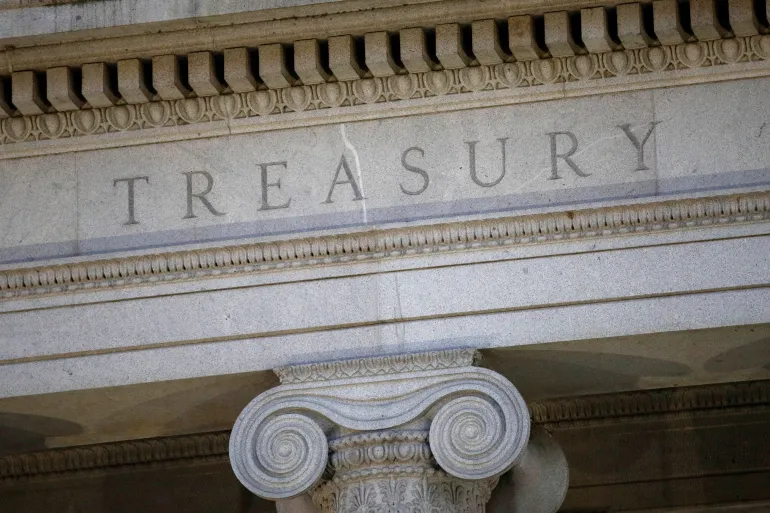The U.S. sits on a massive gold stash officially valued at $11 billion—but at today’s prices, it’s worth more than $750 billion. Could revaluation be a game-changer for the national debt?
Gold prices have surged more than 40% in the past year, climbing from under $2,400 an ounce to over $3,400, while the U.S. national debt nears $37 trillion, according to Forbes. This stark contrast has reignited debate over whether the Treasury should revalue its gold reserves.
Officially, the U.S. Treasury values its gold at $42.22 an ounce—a price set in 1973. With 261.5 million ounces in reserves, mostly stored at Fort Knox, this results in a book value of $11 billion. Market prices today place the value at over $750 billion. A revaluation wouldn’t involve selling gold—it would simply update its accounting value.
How Revaluation Could Work
The Federal Reserve’s August 1 research note, “Official Reserve Revaluations: The International Experience”, explores how countries like Germany, Italy, Lebanon, Curacao, Saint Martin, and South Africa have leveraged gains on gold reserves to raise funds. Some used the proceeds to reduce debt; others covered central bank losses.
In theory, the U.S. could revalue its gold certificates, establish a new official price, and transfer gold to the Fed at this updated valuation. The Treasury would then receive newly “created” funds without moving any physical gold. Policy decisions would dictate whether those funds reduce debt, finance new spending, or back a sovereign wealth or Bitcoin reserve.

Is the U.S. Treasury preparing to revalue it's Gold reserves to help with national debt?
Potential Benefits and Risks
While revaluation sounds appealing, the approach carries economic risks:
-
Inflation: Crediting the Treasury with new funds could increase the money supply, stoking inflation. Critics warn it could resemble “backdoor money printing” or accounting manipulation.
-
Historical Precedent: The 1934 U.S. gold revaluation sharply increased the money supply and sidelined the Federal Reserve until the 1951 Fed-Treasury Accord restored central bank independence.
-
Market Perception: Any move seen as undermining Fed independence might provoke political backlash or market volatility.
Treasury Secretary Scott Bessent has publicly disavowed any plans for revaluation, telling the All-In Podcast in March: “I can say today we’re not revaluing the gold.”
Gold Revaluation and Policy Innovation
Some lawmakers, like Wyoming Senator Cynthia Lummis, have floated using revaluation proceeds to fund a sovereign wealth fund or strategic Bitcoin reserve—ideas also discussed by President Trump. Though speculative, such policies could transform the Treasury’s balance sheet and U.S. fiscal strategy.
The Overton Window Shifts
Even if the Treasury isn’t considering revaluation today, the Federal Reserve publishing a note on the practice suggests the concept is gaining legitimacy. Ideas once dismissed as fringe may now be debated seriously in policy circles.

Gold bars accompanied by an upward arrow, representing soaring gold prices and the growing potential value of U.S. reserves.
People Also Ask (FAQs)
What is gold revaluation?
Gold revaluation updates the official accounting value of government gold reserves to reflect current market prices. It does not require selling the gold.
How could revaluation impact inflation?
Crediting the Treasury with new funds from revaluation could increase the money supply, potentially driving inflation if not carefully managed.
Has the U.S. ever revalued its gold?
Yes, in 1934 the U.S. revalued gold, sharply increasing the money supply and temporarily sidelining the Federal Reserve.
Could revaluation be used to pay down debt or fund projects?
Theoretically, yes. Revaluation proceeds could be used for debt reduction, a sovereign wealth fund, or strategic reserves like Bitcoin, depending on policy choices.
Conclusion: A $750 Billion Opportunity or a Policy Minefield?
The U.S. Treasury’s gold hoard represents hidden value that could, in theory, ease fiscal pressures without raising taxes or issuing new debt. Yet historical precedent and economic risks make revaluation a delicate balancing act. Whether it remains an academic curiosity or becomes a policy tool will depend on evolving political, economic, and market conditions.














